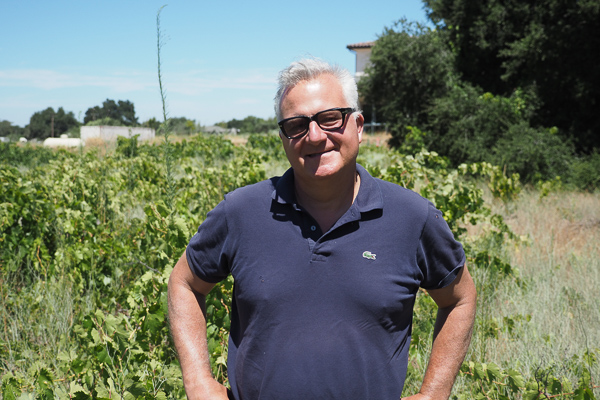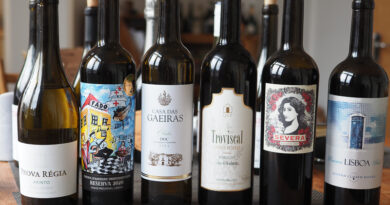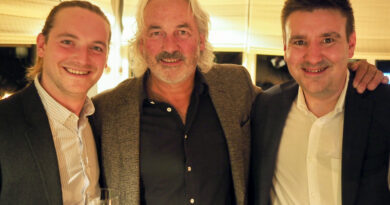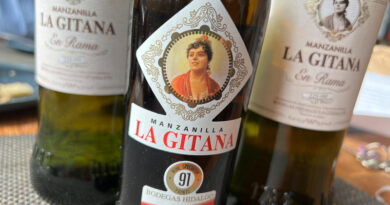Abe Schoener: the thought-leader vigneron, opening a new urban winery in LA
Abe Schoener, ex-philosophy professor, is the winemaker behind the Scholium Project, an innovative Californian micronegociant winery that’s hard to put into a box. On the one hand it’s quite natural; but on the other, it isn’t a member of the natural wine club. He’s also one of the three winemaking partners in the Brooklyn-based Red Hook urban winery, which specializes in wines from New York State. His latest project is a second urban winery, based in a large industrial building near the Los Angeles River. I visited to find out more in August 2019, just as the winery was receiving the first grapes. It’s very much early stages: there is no equipment in this winery save for a small manual basket press, a few barrels and a forklift. I also got to drive out with the team to look at a few vineyards that they are buying grapes from. Here’s my interview with Abe, from a drive we took together to a party in the Hollywood Hills, in which he explains the new project and we discuss his approach to making wine.
Jamie Goode: What prompted the urban winery, and what is your vision?
Abe Schoener: Around 2016 I had a sense that I needed to open a tasting room for the commercial help of the Scholium Project. It took too much time and energy to create wholesale distribution of sufficient size to support me and my two full-time employees. I enjoy travelling very much and I enjoy working the market, but it was barely keeping the business alive and it consumed a lot of time and energy. So I thought: I need to do what other people do, even if I do it differently. And that is to create a place that is my own where people can come to buy the wines, and I where I can sell them in my own way.
I told some friends about this, and one of the first friends was Tegan Passalacqua. I told him I was going to do it in Napa, and I was thinking of collaborating with some other people. Tegan grew up in Napa, lives in Napa, and intends to spend the rest of his life there. But he said f*** Napa, do it in LA. He knew the demographic that the Scholium Project would appeal to is a very urban one.
JG: So the urban LA demographic is a better fit than doing another thing in an already saturated market?
AS: Yes, exactly. I thought that even in an oversaturated market I’d have the advantage of doing something different, but Teegan’s point was, these are not your people. The people who come to Napa for wine tourism are coming for those wineries that are already there. Me creating something different is not going to appeal to those people. Bring the winery to where the people are who want to buy your wines.
This dovetailed with something I have been thinking of for more than 10 years. In 2005 I first had the idea of doing a winery in Los Angeles. The first time I ever had the idea of making wine in the city was here in Los Angeles, and it was because of the old industrial buildings. The buildings made me think that the right thing to do with some of them is to make wine in them.
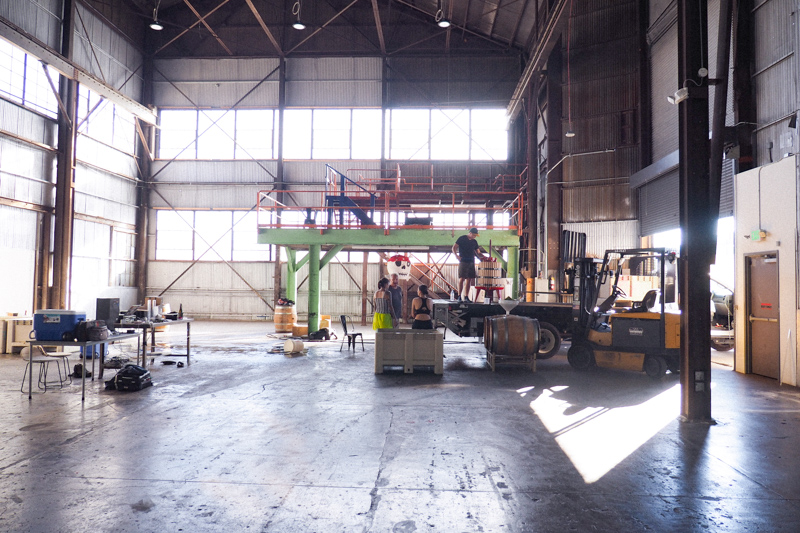
JG: Did you experience in Red Hook [the urban winery collaboration Abe is involved with in Brooklyn] have anything to do with this?
AS: Yes. Red Hook was an opportunity to try to do this thing. But the idea really originated in Los Angeles. The urban winery there was also borne out of the fabric of the neighbourhood, in the same way that the buildings in LA made me think of making wine here.
When we started Red Hook I didn’t think of it as a stepping stone to Los Angeles, to such an extent that LA fell out of my mind for six years. I didn’t think about doing this thing in LA until 2014, and it was being here that made me think of it. It was the desire for a tasting room, the sense that the market for my wines was urban, and then last of all it was wanting to be part of the fabric of this city.
JG: In terms of the philosophy of what you are doing, is it about finding special vineyards around California and making wines from those, or is there something more targeted?
AS: I don’t want to say it is more targeted. It is very much about finding special vineyards around California. Christina [Rasmussen] said, why did you even have the sense that there would be any good vineyards worth working with here? I said, for two reasons. One, for a long time before, I had been driving around back country San Diego, long before I even made wine, and I had noticed that there were old apple orchards and a very small number of what looked like old bush-trained vineyards in the north country of San Diego. No one ever talked about these vineyards. So I thought maybe there are other vineyards that are really cool that are just lying unheeded. Second, when I started the Scholium Project I was determined to work with vineyards that other people weren’t interested in just to see what could be done with them. I had great success with that method in Northern California: maybe I’ll have some success in Southern California. I didn’t have the assurance that there were going to be interesting vineyards here, but I had the hope and desire to work with them.
JG: Your winemaking seems to be quite natural. Would you consider yourself to be part of the natural wine movement?
AS: No, but I would say that I have benefited from it. There are people who are committed to it in a different way than I am. What I mean by this is not that my commitment is only medium, just that I am not the least bit conventional, and I am unorthodox. I have never been orthodox about anything. And I’m for sure not dogmatic. People who are orthodox and dogmatic are fighting a battle that I’m not fighting, and I have benefitted from the attention that is paid to them, even if not all of my wines are made in the same way.
JG: So your winemaking is determined by what comes in from the vines?
AS: It is. Every so often we have an end goal in mind, but in general our end goals are pretty wide, and are about a devotion to the vineyard without having a clear sense when we start of what the best way of working with that vineyard is.
JG: So you don’t tend to use sulphites but you will sometimes?
AS: No question. I don’t have any hesitation. We think that there are specific applications for them. We are not interested in the moderate use of sulphites. We are either interested in trying to use none, or if we think there is an application that requires a lot, we use a lot.
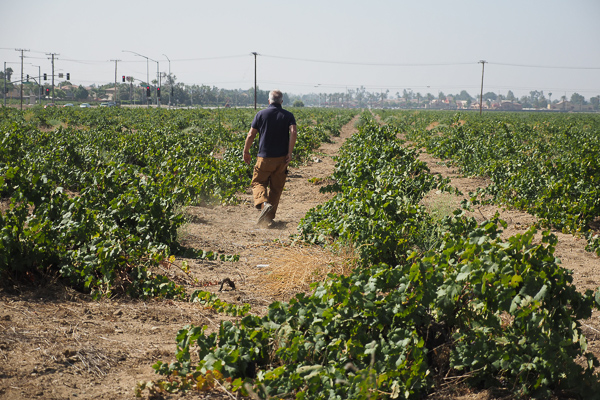
JG: Are you currently prospecting for more vineyards?
AS: Yes, I am absolutely full of excitement. Several years ago, Jon Bonné [US wine writer, author of The New California] pointed me to a vineyard when I first told him about my desire to make wine in Los Angeles. He swore me to secrecy when he took me to the vineyard, not because it was a secret, but because he wanted to make sure that when his story broke, no one had leaked out anything about it. He brought me to this vineyard which we are now going to work with that was utterly unknown to me. When his story broke, people who were knowledgeable said they had heard of this vineyard but they’d never been there. What I heard over the next few years is that this vineyard was barely known, and because southern California is so remote from the heart of winemaking in California, I didn’t know anyone who’d visited this vineyard, which is called Lopez. It is in the Historic Vineyard Society, which Teegan helps to curate and that is a sign of the degree to which it is not unknown.
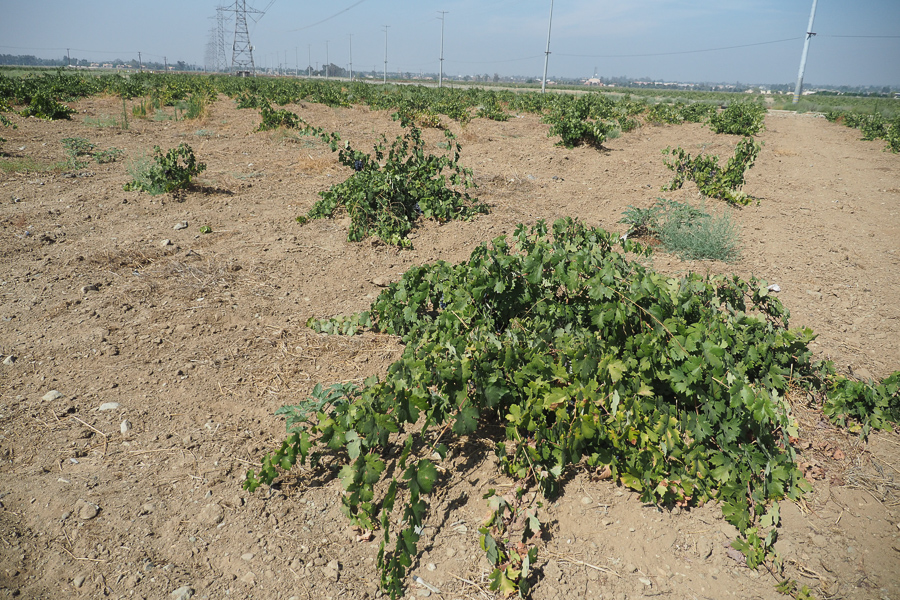
JG: What is the Historic Vineyard Society?
AS: It is an aggregation of data rather than a coalition, but in so far that it is a coalition, it is devoted to preserving those vineyards. The fact that Lopez still exists is amazing. It is controlled and farmed by the Galleano family, which is one of the two oldest winemaking families in the Cucamonga Valley, and the last vestiges of what had been a really big, important and quality-driven winemaking culture. It is almost straight east of Los Angeles, running east-west, parallel to the San Gabriel mountains. The soils are very poor and sandy. Everything in this part of southern California is very dry and sandy with very little loam and organic matter. It is all some version of desert.
JG: So what would a potential Abe vineyard look like? Old vines?
AS: For sure. We are going to look at some vineyards tomorrow. We are not restricting ourselves to old vines, because there is someone growing Pecorino. It is hard not to be interested in Pecorino. What are we looking for? We are looking for old bush vines. We are looking for old head-trained vines. We are looking for vineyards that are farmed well without herbicide and fertilizer. But I think that the most interesting thing is old vines. Grape variety is pretty low on our list, but once one commits to old vines there are very few grape varieties. Mission and Zinfandel predominantly.
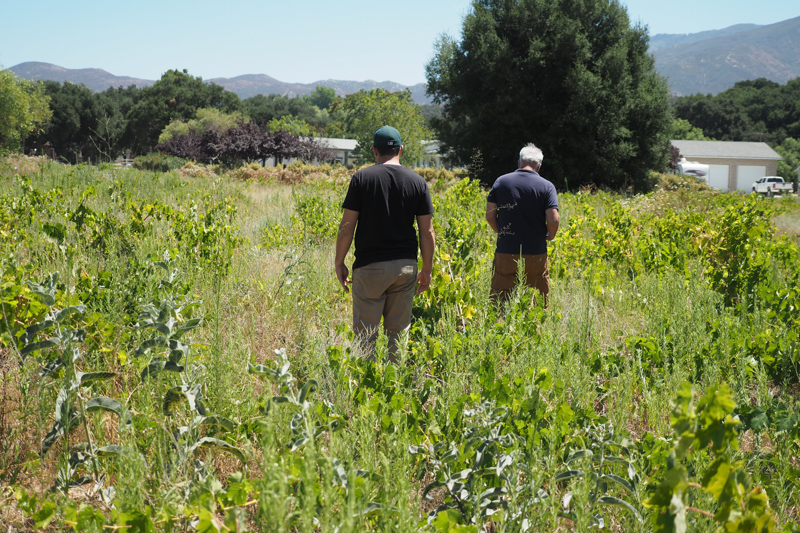
JG: Are you a blender or a varietal guy?
AS: The way we have always approached things is to focus on vineyards, and not to care about grape variety too much. So we have never done a blend that is based on bringing grape varieties together. We only blend as a secondary focus. We made a very successful red wine called Gardens of Babylon, that was always based on the Babylon vineyard. This had Petit Sirah, and we brought in wine from other vineyards, but it was never our primary focus. If we create this blend as a home for things, then we can be super serious and only release A and A+ quality wines. Anything else can go in the Gardens of Babylon. Alex [Pitt] and I started a different blend in 2015 which we considered the level of the A wines because it is a solera white wine and we add components to it without doing blending trials. We put a whole bunch of stuff together in a tank in 2015, with some components as old as 2012, and we just keep adding things to it when we think they will be good additions.
Down here we are still not sure what we are going to do, but it looks like we can do everything we want and make it single vineyard if we want to.
JG: Inevitably, it will mean that you are working with small batches?
AS: Yes, and we are devoted to that. This is our raison d’etre. I must say I am excited about making a lot of white Zinfandel, though! The Lopez vineyard is so big. It is about 270 acres.
JG: I hear that you are going to be collaborating with Rajat Parr on this new urban winery. How does this work?
AS: We have collaborated on almost every step for the last couple of months. We are putting our heads together pretty much with every step as we go forwards. He will continue to make wines completely independently of me, and I will do the same, in spite of how closely we are working. I don’t think there is going to be any traceable way that he and I will affect each other in our independent winemaking, but I’m sure that there will be some consequence of it. On top of this nebulous thing, we are going to make a series of wines in complete collaboration, called The Los Angeles River Company. This will be the brand.
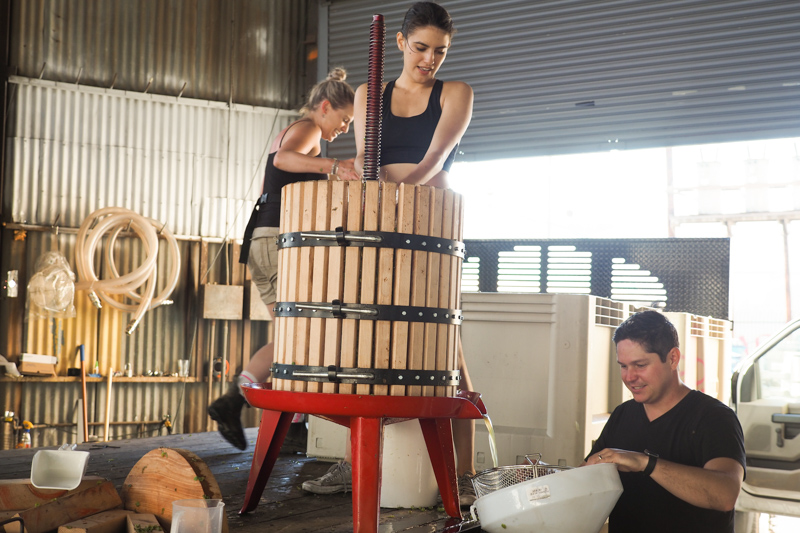
JG: Is that the operating name of the business?
AS: No, the operating name is just slightly different: The Los Angeles River Wine Company. Raj and I decided that there was something just a little too obvious about calling what we were doing a wine company. We are both focused on the history of the river, for the whole city, but in particular for that neighbourhood, so we are calling the joint thing The Los Angeles River Company. We will make wines together under that name, and they will be somewhat different from the wines that we are making independently. But at the moment we don’t anticipate sourcing vineyards specifically for this. It is very likely that there will be a Lopez wine for that project. In addition to Lopez, there is another vineyard farmed by the Galleanos, but it is not Lopez. They have a vineyard surrounding their winery that is just about the same age as Lopez, and it has a pretty large block of Alicante Bouschet which they grow for making Ports. They don’t make non-fortified wine from that. Raj is interested in making a relatively early harvested wine from Alicante Bouschet, with maybe 10% white fruit (Palomino). The same vineyard has a really large mixed block, and we know it has Palomino in it. It is just not clear whether we are going to be able to harvest any separately. That would be an example of a likely Los Angeles River Company wine.
We think of Lopez as the heart of what we are doing. The opportunity to work with this vineyard that is geographically and historically tied to the city seems so important.
It is an own rooted Zinfandel vineyard planted as Italian immigrants moved their winemaking and grapegrowing operations out of Los Angeles into that valley. It has been farmed without irrigation. I’m sure that at some point in its life it was farmed in a more industrial way, but it is also possible that no one ever did anything so modern as use RoundUp in the vineyard, just because it was more primitive than that.
JG: Are you involved in any other collaborations at the moment? Just Scholium, Red Hook and this Los Angeles project?
AS: I started something in France several years ago, and we just didn’t mount sufficient effort to sell the wine, so we stopped making it. But I owned together with some friends a very small amount of property in the Roussillon. There are seven different plots in the town of Maury. One of the vineyards died and so we grubbed it up. But all the others are super-healthy and the most interesting one is a mixed red and white vineyard on its own roots from the 1890s. I think there are 20 different grape varieties there. That project is defunct. We are going to bring in a third partner into the Los Angeles River Wine Company, another winemaker, Alexander Rosanelli. He is a winemaker I met on the north fork, and he also makes wine in Oregon.
JG: So next vintage you expect to be running quite a lot through the LA winery?
AS: I haven’t done a production plan. I have a production budget, and I have skeleton fruit sourcing. We anticipate making a lot of wine next year.
I have the following idea. I don’t know if it is going to be practicable, but so far the numbers work. The idea is that except for the kitchen, there will be no permanent structures in the winery. We don’t put anything in there that we can’t move with a forklift. We think we will be able to get away with glycol lines that you can move. No big tanks. Right now the biggest ones we are looking at are about 1500 gallons. I’m looking at some 60 and 70 hectolitre wooden tanks and 1500 gallon concrete tanks, and all of these are forklift-able. We will get some much smaller stainless tanks and use a lot of wooden vessels. Alex and I are rethinking our traditional reliance on barriques. We have used them because of convenience and small capital requirements. Because the investors I am bringing in, we are going to have more capital available, so we can buy more expensive tanks and do more tank ageing that we used to do. We have never used 500, 600 and 700 litre containers for ageing, and we really want to. I am also interested in smaller oak ovals.

